YouTube is a popular tool for business promotion. However, even if you're actively creating videos, that doesn't always mean you're moving in the right direction. It's important to understand how your channel is performing, how successful it is, and whether it's helping you achieve your goals.
To evaluate your channel and its performance without the need for experts, YouTube channel statistics are a key tool. They allow you to gain insight into your channel's effectiveness and make informed decisions. In this article, I'll explain how to obtain and interpret channel statistics.
Where to view statistics
If you're looking for online services and extensions for a more detailed analysis of your YouTube channel's statistics, here's a list of recommendations. These tools offer similar functionality, but differ in the scope and complexity of the data they provide.
Getting acquainted with YouTube statistics using specialized services
In today's world, access to analytics tools facilitates more effective management and development of YouTube channels. To avoid information overload, we'll explore key aspects of channel analysis and optimization using the example of VidIQ.
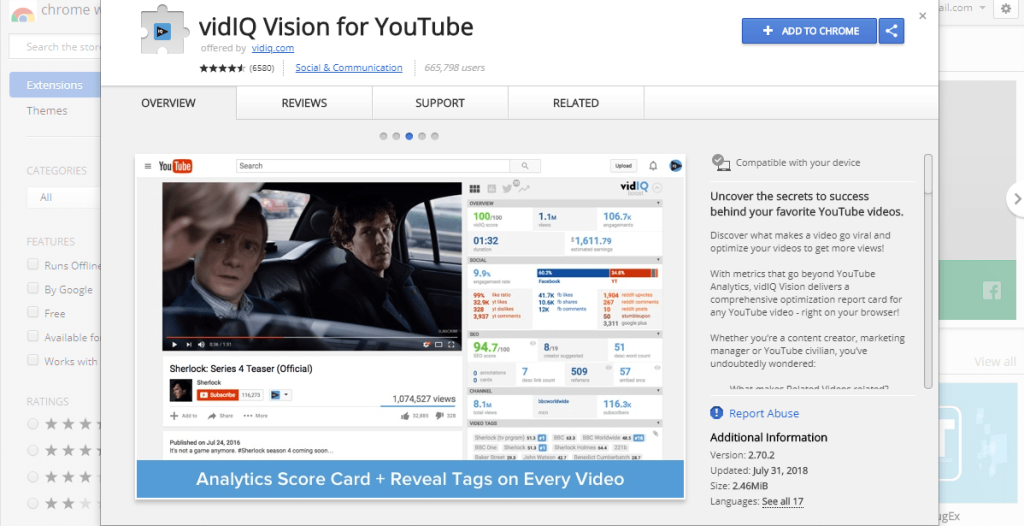
Analytics
In the Analytics section, you can study your subscribers in more detail, find out which videos generate the most interest, how much time they spend watching your content, and how successful your promotion methods are.
YouTube SEO
This section allows you to determine the total number of video views and analyze the strength of titles and the effectiveness of third-party advertising. A graphical chart displays channel statistics, including total views, suggested views, and search views, allowing you to analyze changes over a selected period.
Channel overview
The "Channel Overview" section helps you assess viewer engagement. By dividing the total watch time by the number of views, you can determine the average time a user spends watching a video. This allows you to identify how long viewers watch a video, when they stop watching, and what needs improvement.
Demographic data
Analyzing demographics will help you better understand your target audience. This metric lets you see which gender and age group most frequently engages with your videos. This data is presented graphically and as a percentage.
By using modern analytics services, you can more effectively analyze, optimize, and develop your YouTube channel, taking into account the tastes and needs of your audience.
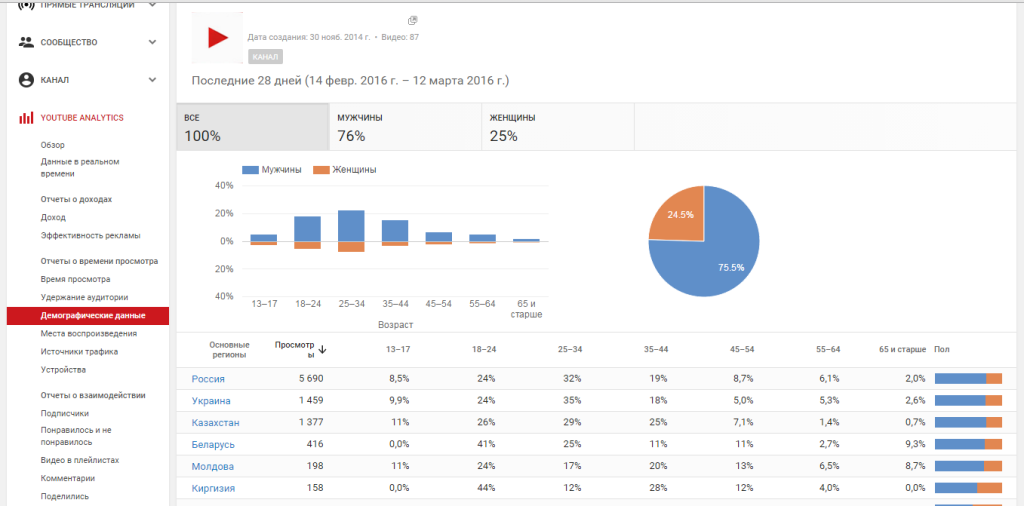
Insiders
Here you'll find information about your channel's most popular videos, search queries, playlists, and other key elements.
Valuable tip: For video promotion, we recommend using a native promotion service. You can select an audience based on 30 criteria, and the service will automatically place your video in locations where your audience hangs out. This ensures 100% organic views.
Video analysis
Track which videos have become the most popular over time. Analytics are presented in a table format, including video titles, view counts, and viewing duration.
YouTube statistics: new video analysis
Search queries
Identify the most popular search queries. By analyzing metrics, you can determine audience interests, which will help you develop a content plan and scripts for future videos that will increase your channel's popularity. The data is organized in a table showing the search query, number of views, and total watch time.
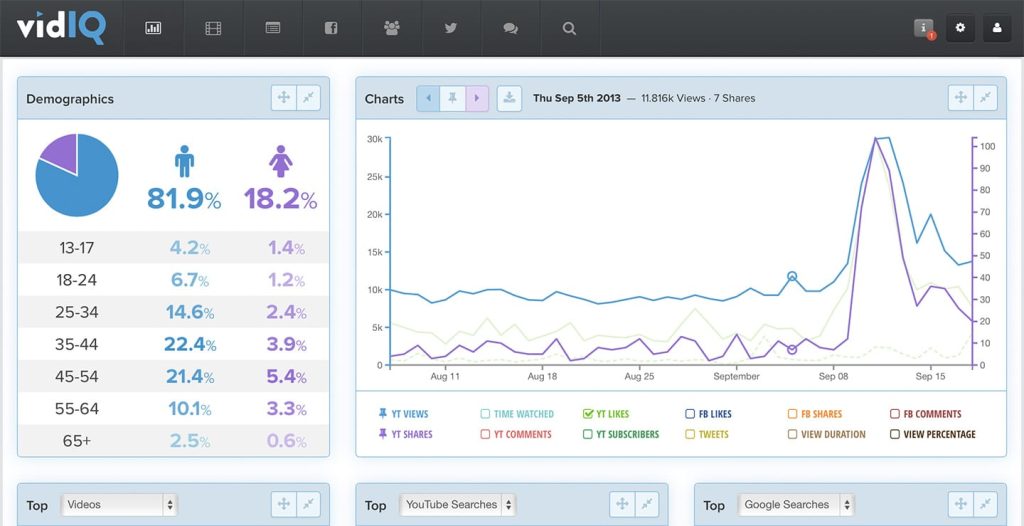
Optimal time for publication
Explore the times when YouTube videos attract the most attention. This data will help you determine the optimal time to publish new videos, maximizing audience reach. Analytics are presented in two formats: the top graph shows the relationship between viewing time, and the bottom graph shows the distribution of activity by day of the week.
Audience geography
Research the geographic distribution of your subscribers. This information will help you fine-tune your target audience and, if you have a significant number of international viewers, add subtitles to expand your reach. Statistics are presented as percentages.
Playlist analysis
Study the popularity of your playlists with users. Analytics are presented in a table format with a ranking, including the playlist name, number of views, and engagement rate.
Using this information, provided by modern services, you can more consciously analyze and optimize your YouTube channel to attract and retain an audience.
Analysis and conclusions
Analyze your channel's overall growth and identify areas that need attention. For example, you might notice that your videos have a high number of views but not enough likes. This doesn't necessarily mean viewers don't like the content; more likely, they simply don't care about the likes they've given. In this case, in future videos, you could encourage viewers to like the content if they find it engaging.
This section presents key metrics for your YouTube channel, including the number of subscribers, views, likes, comments, engagement rate, and number of uploaded videos. The analytics data is presented in numerical format.
Studying trends
Track changes in views, impressions, and likes over a specific period of time. This will help you determine whether interest in your channel is growing or declining. Metrics are presented in a table, including 7- and 30-day statistics, as well as percentage change trends.
Video analysis
Visually identify the most popular videos among all those uploaded to your channel. By analyzing statistics, you can identify the most popular topics and create a content plan based on this data. The table provides information on the title, publication date, tags, views, likes, and comments. You can also view detailed analytics for a specific video.
Analysis of descriptions
Run campaigns based on video descriptions and tags. Evaluate the scores assigned by the service for each description and tag. This will help you understand which tags are relevant and effective for user queries, as well as which description structure is most effective. You can run a campaign based on the number of videos, a video list, or a playlist.
Subscriber analysis
Explore your subscribers' most popular videos and the top channels they subscribe to. This will help you better understand your target audience's interests, discover what content they enjoy, and leverage this knowledge on your channel. This section also provides data on the best video upload times in graphical format, as well as the ability to change your time zone.
Search Engine Optimization
Study all tag analytics, select the most relevant keywords, and add them to your videos. This optimization can even be performed on previously published videos, allowing you to boost even older posts in search results.
Mass optimization
The most optimized videos will appear at the top of search results. Add recommended keywords or ignore them by selecting them individually or in bulk.
Analysis of popular channel tags
Explore popular tags on your channel and determine which ones perform best for you. The service will evaluate how effective a given keyword is for your channel. You'll be able to see how many times a month users search for a specific term on YouTube, how often a particular tag is used in search queries, and the number of videos competing for that keyword.
The statistics display the total number of times this tag appears on your channel, the highest search rank achieved with this tag in search queries, and the number of times this tag appears in the top 50 search results.
Keyword search
Search by keyword. After entering your query, a table of tags associated with the keyword will appear. Details for each column were discussed above.
Added keywords
In this section, the service tracks the keywords you've added to your channel. You'll be able to see when and which keywords were added, who added them, and which videos they relate to.
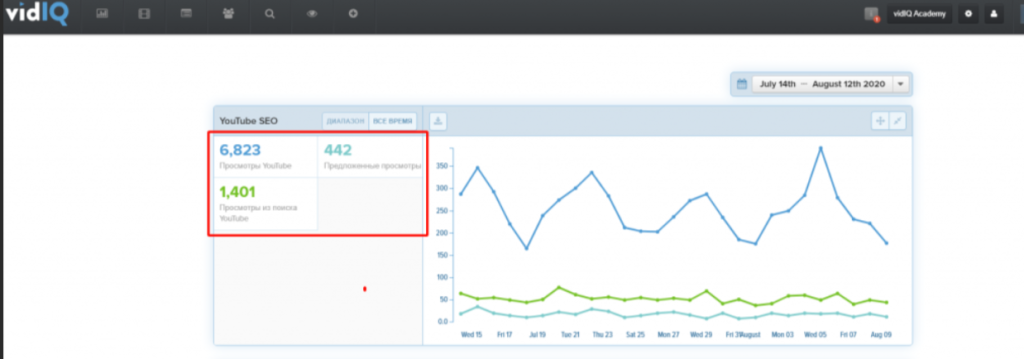
Competitor analysis
Compare your analytics with competitor data. This section, while not providing detailed information, provides general information on views and subscribers, presented in a graph and summary table for a week, month, or three months.
Competitor Data If you're having trouble, I'll explain how to add the YouTube channel ID you want to compare against.
Open a competitor's channel, right-click, and select "View Code." YouTube statistics code step two. In the search box on the page, enter "channelid content"; the ID will appear next to it. YouTube statistics new code for competitors two. Paste the copied ID into the "Compared channels" field. Analyzing data within YouTube. Now let's look at how to view statistics directly within YouTube. This section is located in Creator Studio and offers two types of analysis: standard and advanced. Let's look at both options in more detail.
Advanced Analysis
For a deeper understanding of your data, you can access advanced analytics. This can be done by selecting "Details" in a specific section or by clicking "Advanced Analytics" in the upper right corner of the screen. This section provides information similar to that found in the standard statistics sections, but it includes more detailed information, such as operating system data, tooltips, viewing languages, and more.
Key indicators
Use the graph to explore information for the selected category. Here you'll find sections such as: videos, traffic sources, location, viewer gender and age, dates, playlists, device type, and ad type.
Additional indicators
In the "More" section, explore analytics by: YouTube product, post formats, playback locations, operating systems, subtitles, video information languages, views in different languages, end credit element types, tooltip types, and websites.
Views and CTR
In the summary table below, analyze information about the number of views, watch time, average view duration, impressions, and CTR for icons.
Data comparison
Compare individual metrics, such as your most popular videos or analytics for previous and current periods. The comparison is also presented as a chart and summary table below. You can compare any statistics available on the YouTube platform.
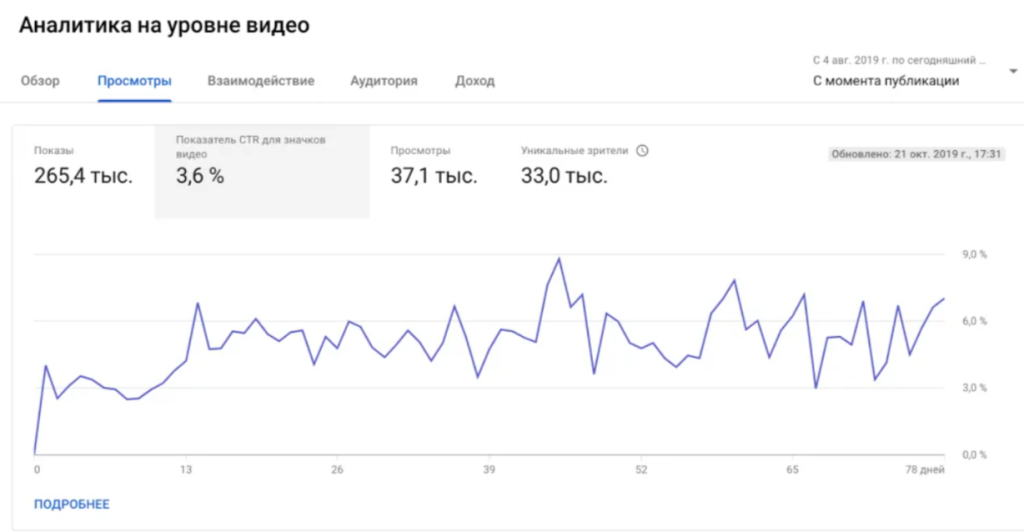
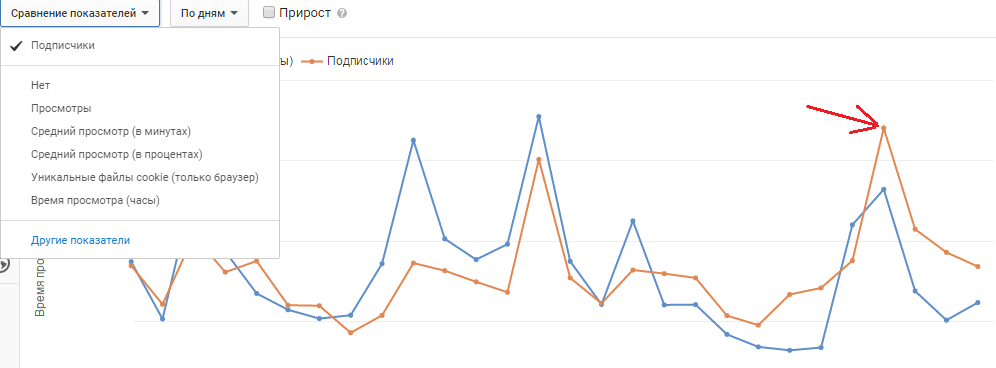
Conclusion
Understanding YouTube analytics isn't just a tool; it's a key resource for developing a successful channel. Regardless of your audience size, using statistics will help you make informed decisions, adapt to viewer interests, and continually improve your content. Remember, analytics aren't just numbers; they're an opportunity to better understand your audience, drive success, and achieve your goals on YouTube.







